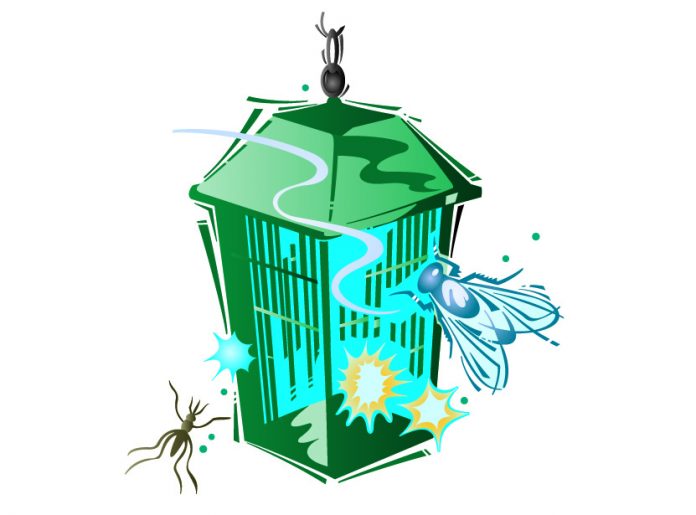The county’s vector control benefit assessment will be increased.
The San Diego County Board of Supervisors, who serve as the board of the county’s Vector Control District, voted 4-0 June 5 with Greg Cox at the National Association of Counties conference to approve the first reading and introduction of the ordinance raising the annual assessment per equivalent dwelling unit from $7.93 for tax year 2018-19 to $8.37 during 2019-20 and voted 5-0 June 26 to approve the second reading and adoption of the 5.5 percent increase.
The vector control assessment is in addition to a service charge which remains at $3.00 for the coastal region and $2.28 for the suburban and rural regions. Both the vector control benefit and the service charge are part of a landowner’s property tax bill.
“Vector control is a very important role of the Department of Environmental Health,” said Supervisor Jim Desmond.
“It helps to ensure our community is safe from vector-borne diseases and controls all types of pesky species.”
The Vector Control Program is administered by the county’s Department of Environmental Health. The program’s primary goal is to prevent vectors from reaching public nuisance or disease thresholds by managing vector habitat and preserving habitat values for vector predators and other beneficial species. The California Health and Safety Code defines a vector as any animal capable of transmitting an agent of human disease or producing human discomfort or injury.
Vectors include mosquitoes, flies, gnats, mites, ticks, rodents, bats, and other small insects and vertebrae. Gophers, which can damage yards but do not directly threaten human health or comfort, are not considered vectors.
The Vector Control Program identifies vector species, recommends techniques for their prevention and control, and anticipates and minimizes any new interaction between vectors and humans. The Vector Control Program’s functions include early detection of public health threats through comprehensive surveillance, protection of public health by controlling vectors or exposure to vectors, and timely responses to customer service complaints or other requests.
The service charge was adopted in 1989 and was originally $3.80 per property. In 1995 that assessment was reduced to its current rate while the three regions were established to address differing service levels. In 2003 the county adopted its West Nile Virus Strategic Response Plan which won awards from both health and government organizations but which reduced the level of effort against other vectors and depleted the Vector Control Program reserves.
Hantavirus and plague monitoring were reduced by 75 percent, and in 2004 the county’s first hantavirus case was discovered in Campo.
Rather than seeking additional funding only to restore the previous levels of activity, a larger assessment for an enhanced program was proposed and subsequently approved by the county’s landowning voters in 2005. The voters approved a maximum rate of $8.55 per single-family equivalent with allowable annual increases based on the San Diego Area Consumer Price Index but no more than 5 percent per year (for 2019-20 the maximum authorized assessment is $11.74 per single-family equivalent).
The $8.55 additional assessment raised $9.5 million for the program, including $2.3 million in one-time costs.
The assessment covers all properties in San Diego County, including those in the county’s 18 incorporated cities and those owned by government agencies. A single-family home is assessed the base rate, agricultural property with a house is assessed the base rate plus nine cents per acre, and agricultural property without a house is assessed the base rate per 100 acres.
Factors which determine the annual rate include expenditure needs, rollover revenue (money not used in the previous year due to cost savings), and trust fund income. The rate was reduced to $6.36 for 2006-07 and to $5.92 for the following three years.
A decrease in rollover revenue and lower interest rates, which reduced trust fund income, forced an increase to $6.20 for 2010-11, but a reduction in seasonal staff due to favorable climate conditions allowed the rate to be lowered to $5.86 for 2011-12.
The $5.86 rate was retained through 2014-15, and the development of efficiency processes along with the completion of specific phases of programs allowed for a reduction to $5.00 for 2015-16 and 2016-17. The presence of the Aedes mosquito which transmits the Zika, denque, and chikungunya viruses led to a 41.4 percent vector control assessment increase to $7.07 per equivalent dwelling unit for 2017-18, and the increase to $7.93 for 2018-19 allowed for an additional staff position.
The increase to $8.37 per equivalent dwelling unit will allow for two additional staff positions.
The first Aedes mosquito detected in San Diego County was found in October 2014, and the Aedes aegypti and Aedes albopictus species have both been found in San Diego County. Aedes mosquitoes were detected in 16 of the county’s ZIP codes in 2015, 35 ZIP codes in 2016, 48 ZIP codes in 2017, and 55 ZIP codes in 2018. Nearly 500 cases of illness suspected to have been transmitted by the Aedes mosquito have been referred to the Vector Control Program for investigation.
The investigations are initiated one business day after the Department of Environmental Health receives the case information from the county’s Department of Public Health. If Aedes mosquitoes or larvae are found in an area near a confirmed case, the Vector Control Program conducts chemical control for adult mosquitoes and larvae control if necessary while providing outreach and education to occupants within a 150-yard radius.
The county inspects and treats 1,500 known mosquito breeding sources on a monthly basis. In the past the monthly treatment has been from March to October, but due to the recent wet weather mosquito breeding has been observed during winter months and the inspection and treatments will now be conducted throughout the year.
Educational materials are now available in English, Spanish, Vietnamese, Tagalog, Arabic and Mandarin, and bilingual teams explain the response protocol and answer any public questions at least 48 hours before treatment as well as during treatment. Mosquitoes which can transmit West Nile Virus prefer large stagnant bodies of water such as creeks, rivers, and pools for breeding, but Aedes mosquitoes are found in urban areas and prefer to breed in very small sources of water such as plant saucers which may be found in homes or yards.
The increased assessment allows for a Fiscal Year 2019-20 budget of $12.1 million which will provide $7.4 million for permanent and seasonal staff salaries and benefits, $3.6 million for services and supplies including larvacide, aerial applications, and outreach materials, $0.6 million for transportation and equipment costs including maintenance and fuel, and $0.5 million for external overhead and other incidental costs. The $11.2 million budget for Fiscal Year 2018-19 funded $6.8 million for salaries and benefits, $3.3 million for services and supplies, $0.6 million for transportation and equipment expenses, and $0.5 million for external overhead and other incidental costs.
The benefit assessment will account for $7.8 million of the 2019-20 revenue with the service charge funding $2.5 million, available trust fund balance being used for $1.7 million, and interest income or contracts to perform work for other departments and districts providing $0.1 million. The 2018-19 revenue consisted of $7.4 million from benefit assessment collections, $2.5 million from the service charge, $1.2 million from the fund balance, and $0.1 million from interest income and contracts.














